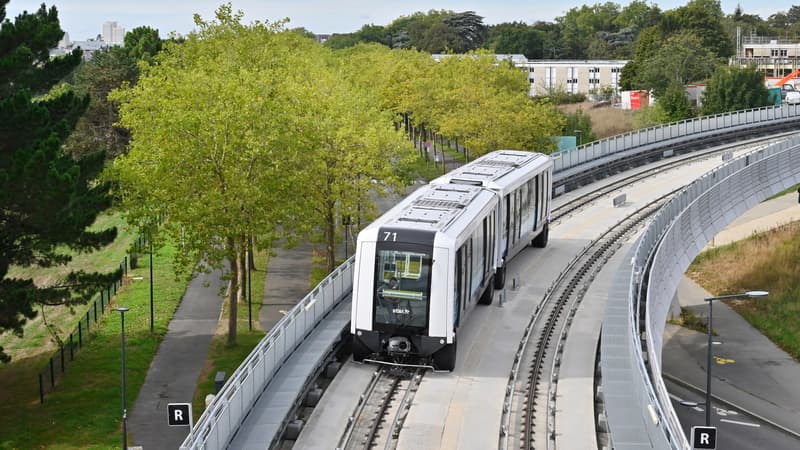The Rennais were patient but this time is the right one. Twenty years after the start-up of its first metro line and 8 years since construction began, the Breton city’s second metro line (line b) was inaugurated with great fanfare this Tuesday morning in the presence of the Delegate Minister for Transport, Clement Beaune. This launch (initially scheduled for 2020) had been delayed several times due to the covid health crisis.
It therefore has 15 stations along 13 kilometers (completed in 21 minutes) for a project that will have cost 1,342 million euros, of which 1,096 supported by the metropolis, and mobilized 764 companies.
A project of 1,300 million euros
Presented as “a local revolution” by the city council, this new line connecting St Jacques-de-la-Lande with Cesson-Sévigné (along a South-West/North-East axis, mostly in a tunnel) must guarantee residents “better access to employment, housing and services” while at the same time boosting the business fabric in the areas crossed.
As of now, three out of four Rennes residents are within 600 meters of a metro station, or less than ten minutes on foot.
Line b should be able to carry 110,000 people per day and thus increase the proportion of commuters using public transport in Rennes to 25% by 2025.
The line was deployed and equipped by the German company Siemens Mobility, which operates 25 light automatic two-car driverless shuttles, the Cityval. He had already taken care of deploying line a.
Automatic driverless shuttles
Alstom’s competitor in the very lucrative urban rail transport market (trams and metros) also supplied the entire systems engineering, drive automation, track systems, centralized control station, workshop garage, as well as radio communication, real-time video transmission at stations and in boarding trains and maintenance.
It is wider than the Val currently in operation on line a (2.65 m instead of 2.08 m), and is accessible to people with reduced mobility. It can carry 179 people at an average speed of 36 km/h (80 peak) with a frequency of 67 seconds between trains at rush hour.
It is above all scalable depending on the traffic, a strong argument in favor of the city. “In the long term, the increase in the use of the line beyond the 9,000 people transported per hour and direction (that is, 200,000 passengers per day with a frequency of the order of one minute at peak hours) will require train changes by adding a third car,” explains Siemens.
At the same time, the proposed system is “under development”, warns Stéphane Bayon de Noyer, project manager at Siemens Mobility, quoted by AFP.
“When you develop a system, you inevitably have pitfalls, you inevitably have tests where you haven’t achieved performance,” he continued.
A “contractual dialogue” has been started with the metropolis on the payment by Siemens Mobility of late payment fines, he explains. They could amount to between 30 and 40 million euros, according to information from the regional press. “We will address this issue with serenity,” concluded the manager.
Source: BFM TV


